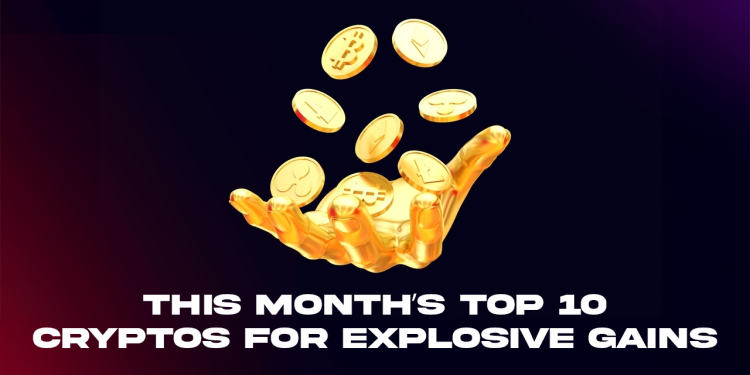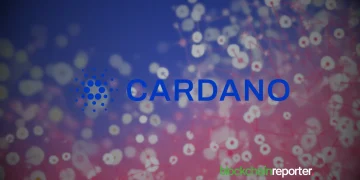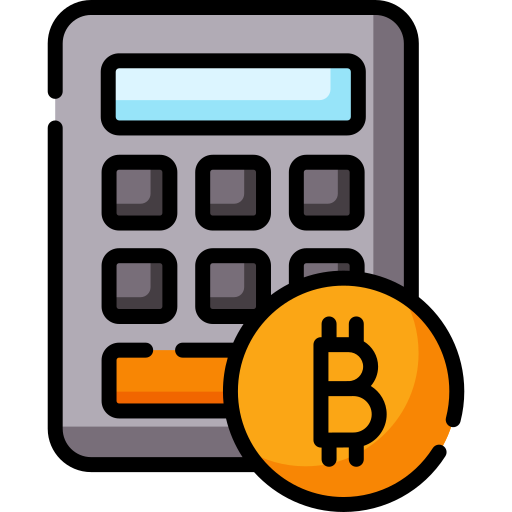Cryptocurrency has exploded over the last decade, and it’s clear that we are witnessing a technological revolution in the financial sector. The space is constantly evolving, with new projects emerging every year. However, while Bitcoin and Ethereum dominate the market, a new wave of low-cap altcoins is making waves, offering high growth potential and significant opportunities for investors. These low-cap cryptos, though often more volatile, come with massive upside potential—especially when they align with emerging technologies and market trends.
One such low-cap crypto that’s taking the industry by storm is Qubetics. Positioned as an innovative solution to the limitations of traditional blockchain technology, Qubetics is rapidly gaining attention with its QubeQode IDE and its groundbreaking approach to decentralized applications. The ongoing presale of Qubetics ($TICS) has already raised more than $12.6 million, proving that the market sees the potential in what this token brings to the table.
In this listicle, we’ll explore the top 10 low cap cryptos—with a focus on Qubetics—and discuss their latest developments, innovations, and how they’ve impacted the market. Let’s dive into what makes these cryptos worth watching, from Chainlink to AAVE.
1. Qubetics: The Future of Decentralized Innovation
Qubetics isn’t just another low-cap coin trying to ride the coattails of blockchain technology. It’s a game-changer with its QubeQode IDE—an integrated development environment designed to revolutionize decentralized applications (dApps). The crypto world has long faced challenges related to scalability, speed, and security when it comes to building decentralized projects, but Qubetics is here to address these issues head-on.
One of the key developments around Qubetics is its QubeQode IDE, a toolset designed to simplify the development of decentralized applications. This unique IDE streamlines the process of building on-chain solutions by enabling developers to create, test, and deploy dApps with ease. Whether you’re an individual developer or a business, QubeQode helps bridge the gap between blockchain adoption and real-world utility.
Qubetics is also making waves with its presale, which is now in its 21st stage. The presale has already sold over 470 million tokens, raising more than $12.6 million and attracting more than 19,700 holders. Analysts are optimistic about the future of $TICS, with predictions showing it could rise to $1 or even $5 after the presale concludes. With such strong demand and innovative technology, Qubetics could become one of the top cryptos in the low-cap category.
QubeQode IDE and its Real-Life Applications
Imagine being a small business owner in North America looking to build a decentralized app for your customer loyalty program. Instead of dealing with the cumbersome complexities of traditional blockchain development, you can simply use QubeQode. It gives you the tools to build quickly, saving time and costs, while ensuring your app is decentralized and scalable.
Similarly, individual developers can use QubeQode to create personal blockchain projects without needing deep technical knowledge. By reducing barriers to entry, Qubetics is making decentralized tech more accessible than ever before.
Why Did This Coin Make it to This List?
With its innovative approach to blockchain development and the growing demand for decentralized applications, Qubetics is poised for massive growth, making it a standout in the world of low-cap cryptos.
2. Chainlink: The Blockchain Oracle
Chainlink has long been considered one of the most important projects in the blockchain space. As a decentralized oracle network, Chainlink provides a way for smart contracts to interact with real-world data, bridging the gap between blockchain technology and off-chain applications. Its growing adoption across industries, including finance, insurance, and gaming, has only solidified its position as one of the top low-cap cryptos to watch.
The biggest news around Chainlink is its continued expansion and partnerships. Recently, Chainlink has integrated with more blockchains and decentralized finance (DeFi) platforms, making it an even more powerful player in the blockchain ecosystem. Its integration with Ethereum’s Layer-2 solutions and the upcoming Chainlink 2.0 upgrade, which will introduce new features like staking, are major catalysts for future growth. These developments are bringing Chainlink closer to becoming the go-to oracle solution for decentralized applications.
Additionally, Chainlink is exploring ways to enhance its data verification processes, further improving the accuracy and reliability of the data it provides to smart contracts. This is crucial as the demand for accurate, off-chain data continues to rise, especially in sectors like finance and insurance.
Chainlink’s ability to provide real-world data to blockchain applications is an invaluable service, and its Oracle network continues to expand. As industries like finance and gaming begin to rely more on decentralized applications, the need for reliable oracles to fetch off-chain data grows. Chainlink’s dominance in this space makes it a low-cap gem with big potential.
Why Did This Coin Make it to This List?
Chainlink’s strong use case in connecting blockchains with real-world data, paired with its growing ecosystem, puts it on a trajectory to perform well as the blockchain space continues to mature.
3. Ripple: A Pioneering Payment Solution
Ripple (XRP) has long been recognized as a leader in the payment sector, offering a faster and cheaper alternative to traditional financial systems. Although Ripple has faced regulatory challenges, its continued innovation and strong partnerships have allowed it to maintain its status as one of the top low-cap cryptos.
The Ripple vs. SEC lawsuit has been one of the most talked-about legal battles in the crypto space. While the outcome is still pending, Ripple has been actively working to demonstrate the legitimacy of its project. Its partnerships with major financial institutions like Santander and American Express have allowed it to continue building its case, while also showcasing its cross-border payment solutions to a global audience.
Ripple’s XRP Ledger has proven to be a highly efficient and secure way of transferring money across borders, and its low-cost structure has made it an attractive alternative to traditional remittance services.
Despite legal uncertainty, Ripple’s network continues to grow, with more financial institutions adopting its technology for faster and cheaper international money transfers. As blockchain technology becomes more widely accepted, Ripple’s dominance in cross-border payments positions it as a strong contender in the low-cap crypto category.
Why Did This Coin Make it to This List?
Ripple’s innovative technology and its ability to provide faster, cheaper cross-border payments make it a standout project, despite its regulatory hurdles.
4. Monero: Privacy-Focused Cryptocurrency
Monero (XMR) has always been one of the go-to cryptocurrencies for users who value privacy above all else. Its focus on untraceable transactions has set it apart from other cryptocurrencies, making it a key player in the space.
Monero’s development team continues to focus on privacy improvements. The implementation of RingCT (Ring Confidential Transactions) and Stealth Addresses ensures that every transaction made on the Monero network is both untraceable and unlinkable. These features have made Monero the preferred choice for users who value anonymity in their financial transactions.
Additionally, Monero is constantly updating its algorithms to stay ahead of potential security risks. With the rise of surveillance technologies and increased scrutiny of cryptocurrencies, these continuous privacy enhancements ensure that Monero remains a top choice for privacy-conscious users.
Why Did This Coin Make It to This List?
Monero’s unwavering commitment to privacy and its ongoing technological advancements keep it at the forefront of the low-cap crypto space. It is a crypto that has carved out a niche for itself, which makes it an attractive long-term investment.
5. Celestia: Redefining Modular Blockchain Architecture
Celestia is one of the most innovative projects in the blockchain space, introducing a modular architecture that decouples consensus and execution. By doing so, it allows developers to create custom blockchains without the limitations of traditional monolithic blockchain structures. This unique design enhances scalability and flexibility, making Celestia an attractive option for developers looking for a more tailored approach to blockchain development.
Unlike traditional blockchains where all functionalities (consensus, execution, and data availability) are bundled together, Celestia separates these components, allowing each to evolve independently. This modular architecture means that Celestia can offer high scalability, faster transaction speeds, and better customizability for decentralized applications (dApps).
Celestia’s architecture ensures that any blockchain built on its network can be optimized for specific use cases, improving performance and reducing unnecessary overhead. As more developers explore this modular approach, Celestia is poised to lead the way in blockchain scalability, especially in the context of decentralized finance (DeFi), gaming, and NFTs.
Why Did This Coin Make It to This List?
Celestia’s novel approach to modular blockchain architecture sets it apart from other low-cap cryptos. Its design allows for faster, more scalable blockchains, making it a standout project for developers and investors alike. As the demand for custom blockchains increases, Celestia is positioning itself to be at the forefront of this new wave in blockchain technology.
6. Stellar: Bridging the Gap in Financial Inclusion
Stellar (XLM) has long been focused on facilitating cross-border transactions, with an emphasis on financial inclusion. It aims to make it easier and cheaper for people around the world to send money across borders, with a particular focus on serving the underbanked and unbanked populations. With Stellar’s network, users can make real-time, low-cost payments, and the project’s unique consensus mechanism enables faster and more secure transactions.
Stellar’s partnerships with major organizations, including IBM and the United Nations, have solidified its place as a leader in the global payments space. By collaborating with these institutions, Stellar is able to expand its reach and provide financial services to millions of people in emerging markets. Stellar’s Anchor program has also allowed local businesses to integrate its network and offer services like remittances and savings, making it a crucial player in financial inclusion.
The network’s recent integrations with other blockchain projects have made it even more versatile, opening the door for new use cases in DeFi, NFTs, and stablecoins.
Why Did This Coin Make It to This List?
Stellar’s commitment to financial inclusion and its strong network of partnerships make it a standout in the low-cap crypto space. Its focus on improving access to financial services for underserved populations around the world makes it a socially impactful project that’s worth watching.
7. Filecoin: Revolutionizing Data Storage
Filecoin (FIL) is one of the most important projects in the world of decentralized storage. As the demand for data storage continues to grow, traditional cloud storage solutions like Amazon Web Services (AWS) and Google Cloud are facing challenges in terms of scalability and cost. Filecoin addresses these issues by offering a decentralized, peer-to-peer network for storing data.
Filecoin’s proof-of-replication and proof-of-spacetime consensus mechanisms ensure that data stored on its network is both secure and reliable. The network’s storage market has seen impressive growth as more users and businesses adopt decentralized storage solutions. Filecoin’s storage mining program allows users to earn FIL tokens by providing unused storage space, turning the network into a massive decentralized cloud storage platform.
With the rise of Web3 technologies, Filecoin is set to play a pivotal role in the infrastructure of decentralized applications. Whether it’s for storing NFTs, dApp data, or personal files, Filecoin offers a decentralized alternative to traditional cloud storage.
Why Did This Coin Make It to This List?
Filecoin’s ability to address the growing need for decentralized storage solutions makes it a compelling project in the low-cap crypto space. With its unique consensus mechanisms and growing adoption, Filecoin is poised to become a key player in the decentralized internet infrastructure market.
8. Polkadot: The Future of Blockchain Interoperability
Polkadot (DOT) is all about blockchain interoperability—making it easier for different blockchains to communicate with each other. This feature is incredibly important in the context of a fragmented blockchain ecosystem, where thousands of different blockchains operate independently without the ability to share data or assets across networks. Polkadot solves this issue with its parachain architecture, enabling multiple blockchains to operate in parallel and communicate seamlessly.
Polkadot’s parachain auctions have been a major development in its ecosystem. These auctions allow projects to secure a spot on Polkadot’s network, enabling them to use the Polkadot relay chain for security and scalability. As more projects participate in these parachain auctions, Polkadot’s ecosystem continues to expand, with DeFi projects, NFTs, and gaming applications finding their home on the network.
Why Did This Coin Make It to This List?
Polkadot’s focus on blockchain interoperability and its successful parachain auctions make it a highly promising project in the low-cap crypto space. As the need for cross-chain communication becomes more urgent, Polkadot’s network is uniquely positioned to address this gap, giving it significant potential for future growth.
9. Polygon: Scaling Ethereum with Layer-2 Solutions
Polygon (MATIC) has emerged as one of the leading Layer-2 solutions for Ethereum, offering a faster and cheaper way to interact with the Ethereum blockchain. As Ethereum continues to face scalability issues, Polygon provides a much-needed solution by reducing transaction costs and increasing throughput without compromising security.
Polygon’s Optimistic Rollups and ZK-Rollups are helping to scale Ethereum by processing transactions off-chain and only submitting the final results to the Ethereum mainnet. This allows for faster and more affordable transactions, which is essential for Ethereum’s continued growth, especially as DeFi and NFTs continue to see explosive growth. Polygon’s integration with major projects like Aave, Uniswap, and SushiSwap has helped it gain widespread adoption and establish itself as a key player in the Ethereum ecosystem.
Why Did This Coin Make it to This List?
Polygon’s crucial role in scaling Ethereum and its growing ecosystem of DeFi and dApp integrations make it one of the most promising low-cap cryptos. With Ethereum’s continued dominance and the increasing need for Layer-2 solutions, Polygon’s value proposition remains strong.
10. AAVE: The Leader in Decentralized Lending
AAVE (AAVE) is one of the most prominent decentralized finance (DeFi) platforms, specializing in decentralized lending and borrowing. It allows users to borrow and lend digital assets without relying on traditional banks or intermediaries, using smart contracts to execute transactions securely and transparently.
AAVE’s recent innovations, like AAVE V3, have helped it maintain its position as the leader in decentralized lending. With features like borrowable liquidity and cross-chain lending, AAVE is setting the standard for DeFi lending protocols. The platform continues to grow, with millions of dollars in locked value (TVL) and a thriving ecosystem of borrowers, lenders, and liquidity providers.
Why Did This Coin Make It to This List?
AAVE’s dominance in the DeFi lending space, paired with its continual development and high user demand, makes it a top contender among low-cap cryptos. Its leadership in decentralized lending positions it for continued success as the DeFi space expands.
Conclusion
Based on our research and analysis, it’s clear that the Top 10 Low Cap Cryptos we’ve highlighted today are some of the most promising projects in the cryptocurrency space. From Qubetics’ innovative development environment to AAVE’s leadership in DeFi, these projects are addressing real-world problems and revolutionizing industries. Whether it’s improving blockchain interoperability, providing decentralized storage, or offering scalable Layer-2 solutions, each of these cryptos has a unique approach that makes it stand out.
If you’re looking to invest in low-cap cryptos with significant upside potential, these projects offer exciting opportunities. Don’t forget to check out Qubetics and its ongoing presale, which has already raised millions and is expected to see massive ROI in the future. Get in while the price is still low, and ride the wave as these innovative projects transform the digital landscape.
For More Information:
Qubetics: https://qubetics.com
Telegram: https://t.me/qubetics
Twitter: https://x.com/qubetics
FAQs
- What makes low-cap cryptos attractive to investors?
Low-cap cryptos often offer higher upside potential compared to established coins. Due to their smaller market caps, they can see significant price movements when adoption grows.
- Why is Qubetics so promising?
Qubetics is revolutionizing decentralized development with its QubeQode IDE, making it easier for developers to create scalable decentralized applications.
- How does Chainlink support smart contracts?
Chainlink provides a decentralized oracle network that allows smart contracts to interact with real-world data, making it a crucial infrastructure for DeFi applications.
- What is the future of Polkadot?
Polkadot’s focus on blockchain interoperability positions it to play a major role in the future of decentralized applications, as it allows blockchains to communicate seamlessly.
- What is AAVE’s role in DeFi?
AAVE leads the DeFi space with its decentralized lending and borrowing protocol, providing users with the ability to interact with digital assets without intermediaries.























